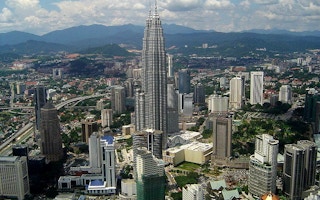Malaysia’s urbanites are building higher fences around their homes and cooping themselves in - a trend that the country’s policymakers want to reverse.
Key to its strategy is transforming Kuala Lumpur (KL) into one of Asia’s top five liveable cities, said Energy Minister Peter Chin on Thursday.
Speaking at a keynote address at KL’s Livable City Summit, Mr Chin outlined some of the challenges and plans for improving Malaysia’s cities, which includes raising the standards of “liveability”.
While no consensus has been reached on the definition of a liveable city, experts agreed that the most liveable cities were those that compelled people to get outside as members of a vibrant, active community. Factors that inhibit this include unfriendly streets clogged with traffic, poor lighting creating unsafe environments, heavy pollution, insufficient public transportation and poor pedestrian amenities.
Liveable cities comparisons thus far have used benchmarks such as education, hygiene and safety, but new standards are emerging, said Mr Chin. “Sustainability is the new buzzword,” he added.
Creating liveable, sustainable cities will give Malaysia’s economic development a competitive edge. “Liveable cities are magnets for economic activities,” Mr Chin said. He added that [economically active cities] provide impetus for growth and attract the best talent.
Factors that draw residents - such as safety, clean water, access to public transport and health facilities - are reflected in the real estate market. “[People today] buy an address rather than buying a home. There is a premium on places considered to be very livable,” he said.
Malaysia’s green initiatives
Mr Chin said the role of his ministry is to develop green initiatives to make Malaysia’s cities more liveable by improving waste management, sanitation and water and energy efficiency.
One of these initiatives is the reduction of non-revenue water (NRW) rates. NRW is water that is lost before reaching the intended end user due to leakages or theft. Malaysia’s NRW rate is estimated at 36 per cent, compared to 5 per cent in Singapore.
In 2006, the Ministry of Finance created a water asset management company called Pengurusan Aset Air Bhd with a mandate to bring NRW levels down to 25 percent by 2020. The company will be replacing deteriorating pipelines and installing new meters. Less wastage of water will ultimately improve the quality of the water provided, he said.
Within the energy sector, the Ministry will prioritise energy efficiency over more costly renewable energy projects. “That’s why we are introducing activities that encourage big users to have an in-house audit system,” Mr Chin said.
To further boost energy efficiency, the government introduced the Green Building Index (GBI) in 2009 to encourage energy efficient buildings. Specially designed to suit Malaysia’s tropical climate, the voluntary certification scheme provides ratings based on a building’s energy and water efficiency in addition to other environmental impacts.
Mr Chin pointed to several high profile projects to demonstrate the effectiveness of the scheme. The recently built Energy Commission Diamond Building was the first public building to achieve a platinum green building rating. The Prime Minister’s office, now undergoing a major retrofit, is also targeted for a platinum rating.
On Tuesday, however, Real Estate and Housing Developers Association (Rehda) president Michael Yam warned real estate investors and developers against rushing into the green building trend too quickly. He claimed the market was not yet ready for a large-scale uptake of green buildings due to its higher up-front costs. He recommended slowly introducing the benefits of green buildings and building awareness to induce the market to embrace the concept. He added that once market demand for green buildings is higher, economies of scale will reduce costs.
Green building standards are mandated in certain projects: Malaysia has committed to transforming Putrajaya and Cyberjaya into low-carbon, green technology townships in a joint venture with Japanese companies announced in December.
Efforts have also been made to modernise the transport sector within greater KL, Malaysia’s largest city. The Government unveiled the Economic Transformation Programme last year, which will see the construction of 150 km of an initial MRT line to supplement existing LRT and Komuter rail services to begin this year at an estimated cost of RM 36.6 billion.
Other initiatives include the introduction of renewable energy feed-in tariffs in the middle of this year, better waste management and the development of infrastructure for electric vehicles by 2012.
Providing the infrastructure and policies for urban residents will be increasingly difficult as urban growth rates skyrocket. Over 66 of the world’s 100 fastest growing cities are in Asia. In peninsular Malaysia, 70 per cent of the population is predicted to live in urban areas by the year 2020.
Mr Chin said liveable city status for Malaysia’s cities was achievable if ministries had the cooperation of a proactive private sector: “While the leadership may be committed to go green, if residents don’t do their part, it will take much longer.”
The summit, attended by more than 130 experts in urban planning, real estate development, green technology and transportation, was hosted by Philips Lighting in partnership with the Urban Land Institute, the Asian Strategy & Leadership Institute (ASLI), AIA Hong Kong and the Hong Kong Institute of Urban Design.










